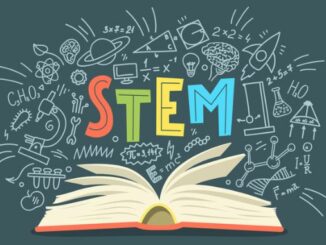
Edtech has the unique ability to allow us to become even more interconnected and socially aware – here’s how you can use it to promote DEI in your classroom
CREDIT: This is an edited version of an article that originally appeared on NAACE
On the topic of education technology, digital skills and developing knowledge of STEM subjects are usually among the most common benefits that come to mind. Edtech is proven to improve student outcomes in relation to attainment, but something that is talked about less often is how edtech has the ability to allow us to promote DEI and become more socially conscious.
Pearson’s Diversity and Inclusion in Schools Report (2020) found that 80% of teachers surveyed believed more can be done to celebrate diverse cultures, people and experiences in UK education.
Through using education technologies effectively, we can continue to embed diversity and inclusion into learning. From the strong representation of people from diverse backgrounds in resources, to using edtech to support students with additional learning needs, edtech has a pivotal role to play.
We must continue to strive to create equal opportunities for all learners to have successful learning experiences that underpin attainment. This has to be deeply rooted in learning but technology has the power to broaden resources and access to valuable learning experiences.
Here are four ways you can continue to incorporate diversity and inclusion into your lessons through the use of edtech:
Apps and tasks that encourage participation and sharing of experiences
- Edtech platforms can be designed to encourage student participation and foster a sense of community within the virtual classroom. Interactive discussion boards, chat features, and collaborative activities can facilitate open sharing of experiences and viewpoints.
- Teachers can create assignments that prompt students to share their unique cultural backgrounds, traditions, or perspectives, fostering mutual understanding and appreciation among peers.
Accessibility tools such as screen readers or visual aids
- Inclusive edtech platforms should prioritise accessibility by offering features such as screen readers, closed captions and audio descriptions.
- By catering to students with diverse learning needs, including those with visual or auditory impairments, educators can ensure that all learners can fully engage with the content and participate in discussions.
Representation of diverse backgrounds in learning through online resources
- Edtech resources, including digital textbooks, videos and multimedia content, should incorporate diverse perspectives, cultures, and histories.
- By using learning materials that reflect the experiences of students from various backgrounds, educators can create an inclusive learning environment that validates and celebrates cultural diversity.
Specific online resources that champion diversity and inclusion
- There are numerous edtech platforms and websites dedicated to promoting multiculturalism, social justice, and inclusivity. Teachers can integrate these resources into their lessons to expose students to a wide range of perspectives and experiences.
To effectively incorporate diversity and inclusion through edtech, teachers should also consider the following practices:
Culturally responsive teaching:
- Adopting culturally responsive teaching approaches involves recognising and embracing students’ cultural backgrounds and using instructional methods that resonate with their experiences.
- Edtech tools can be customised to align with culturally relevant content, languages, and learning styles.
Global collaborations:
- Edtech platforms can facilitate international collaborations between classrooms, allowing students to connect with peers from diverse cultural backgrounds.
- Virtual exchanges and joint projects provide opportunities for cross-cultural learning and meaningful interactions.
Empowerment and representation:
- Encourage students to create and share their own content that represents their unique cultural perspectives and experiences.
- Edtech can empower students to express themselves creatively and share their stories, fostering a sense of pride in their identities.
Continuous professional development:
- Teachers should engage in continuous professional development to enhance their cultural competence and inclusive teaching practices.
- Edtech can also play a role in providing training and resources for educators to develop their skills in fostering diversity and inclusion in the classroom.
It is worth mentioning a significant part of the diversity and inclusion agenda is about how the education sector progresses with narrowing the digital divide. Equity and access issues remain a challenge that the education technology industry and organisations like Naace continue to advocate.
Diversity and inclusion are undoubtedly complex matters with many factors and educators should be encouraged to continue promoting diversity and inclusion in their classrooms through using edtech to broaden learning horizons.



Be the first to comment